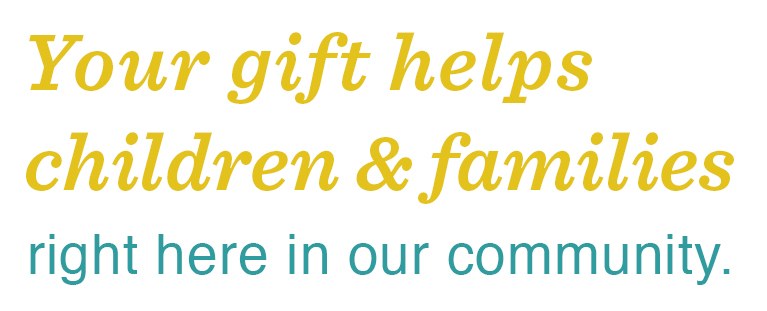- Home
- Our Publications
- Every Family School Edition
- Parent Topics
Dryers and Divorce
by Pat Tyler, Director of Youth & Family Services at the Bridge
Divorce is one of the most stressful events someone can experience. It can be wrought with feelings of failure, sadness, anxiety, fear, anger, and sometimes even relief. Yet in our society of quick fixes and magic potions, the expectation is that people will get over it and move on quickly. As a result, second marriages fail 60% of the time. The many feelings aroused by divorce remind me of the clothes in one of those dryers with the glass doors that you see in the laundromat. The clothes toss and turn and come in all shapes, colors, and sizes—just like feelings do. I think we’ve all been in a situation where we’re in a rush and we want the laundry to be dry so we can move on. We check the dryer to see if it’s done, and some items are dry while others are still damp. The feelings evoked by divorce are like that. Some are ready to be folded and put away, while others are still damp and need more time. Facing our feelings can be painful, but unfortunately the only way through them is to experience them—and we need permission to do so. This process can be time consuming and painful—especially when we just want to feel better—but worth the investment in the long-run.
Both parents and children dealing with divorce experience a wide range of emotions. Gary Neuman, author of Helping Your Kids Cope with Divorce the Sandcastles Way, offers the following suggestions for parents in assisting their children:
Ways to Help Your Children Open Up:
• Choose an informal setting. Sometimes the best conversations happen when you’re having dinner together or during a long drive in the car.
• Don’t be a conversation killer. Listen to your children’s feelings and allow them to have them rather than trying to make it all better.
• Put yourself in their shoes. Hear what it’s like to be them in that moment. Say things like, “it sounds like you feel really sad and kind of mad that you always have to pack up your stuff to bring to mom’s or dad’s place.”
• Initiate the conversation. Don’t avoid the conversation because you’re afraid it will make your child feel sad. If your child isn’t talking, or if you’ve had a prior conversation that you need to follow-up on, just bring it up.
• Welcome tears and emotion. The hardest part as a parent is to really see your child in pain, especially when you think that somehow you have contributed to that pain.
While these are helpful strategies, kids do best when their parents are doing well. Most parents want the best for their children, but their feelings can sometimes cause them to inadvertently hurt their children by saying negative things about the other parent. Parents should avoid this at all costs.
Got Bounce? Fostering Resiliency in Children
by Deborah Zipkin Director, Family Resource Center
Matthew always entered our pre-k classroom by jumping up the four steps at the doorway and then tossing his Batman lunchbox into the class basket. He was a little boy who loved coming to school, whose favorite color was orange and who couldn’t wait to share knock-knock jokes with his classmates.
However, everything changed when construction began on the high rise apartment building where he lived. Matthew‘s mom said he was terrified of the noise made by the jack hammer. Life at home had become so difficult that they were actually considering a long term visit to grandparents who lived in another state.
Matthew refused to go to bed at night for fear that the construction work would begin while he was sleeping. He couldn’t eat breakfast because he was worried that the yellow vested guys would start working before he finished his Cheerios. He would cover his ears as soon as he walked in or out of his building. His fear of the construction noises began to affect his classroom behavior. He spent a lot of time building with blocks and then knocking down his dangerously tall towers. He refused to go out to the school playground because he thought he could still hear the construction noises many streets away.
So Matt’s parents, our classroom teaching staff and Matthew sat down to brainstorm how we could help one four-year-old boy learn to cope with the construction noises. All four adults made several suggestions which Matthew tearfully rejected. With the best of intentions, we talked about how the construction work was necessary in order to keep the building in good shape and keep it safe for everyone who lived there. We mentioned how nice the construction guys were. We talked about how pretty the building would look when it was done. Finally it occurred to us that maybe Matthew could come up with a solution, if we gave him the opportunity and got out of his way.
“Matt,” his mom said. “You have a really smart brain and you are really good at solving problems. Do you have any ideas how we can help you deal with the construction noises?“ Matthew thought for a while. Earmuffs, declared, would solve the problem. If he had orange earmuffs, he wouldn’t hear the noise and he would feel safe again. Off to the local sporting goods store they went where they found a pair of orange ear muffs designed for hunters. Matthew declared they were perfect and life went back to pretty much normal—of course, that’s if normal includes wearing earmuffs in the bathtub.
Matthew drove home an important lesson. Often kids can find their way out of a challenging situation if the caring adults in their lives let them know that they’ve got their backs and then step out of the way. Every time children find their own ways of dealing with stressful situations they are actually acquiring new and valuable coping skills, or as researchers put it, they are becoming more resilient. Both researchers and educators agree that as tempting as it is to protect our kids from all the normal discomforts and hurts that are part of growing up, we’re doing them a disservice if we do.
Children need to practice with some kid-sized adversity; need to have chances to fall down and then bounce back, building competence and confidence as they go. Allowing kids to develop these skills helps build protective factors which can help prevent struggles down the road, such as anxiety, substance abuse, and depression.
Of course this is well and good for the normal ups and downs of childhood. Typical events like having to share toys, lose a game, not make a team, or not be invited to a party certainly cause stress in children and can provide opportunities for emotional growth. Painful as they may be, these are the trials that make up a normal childhood. But when children’s stresslevels increase because of a very difficult time—a divorce, a devastating illness, a deployment, or depression—it’s not the time to ask kids to prove how resilient they are. That’s the time to get help from a counselor or other trusted professional.
Some children are just more resilient than others. Annie, one of the other four-year-olds in our class, couldn’t help but notice Matthew’s distress. Annie was a class leader and intuitively knew when someone needed a hand. Perhaps she was especially empathetic because she was growing up with an older brother with special needs. When a classmate teased Matt about wearing his earmuffs on the playground, Annie started wearing earmuffs, too. Hers were purple.
Teen Suicide: What We All Need to Know
by Marji Vitale, Former Clinical Director,Youth and Family Services
We often hear stories of suicide in our work at the Bridge—whether it’s a teen who thinks the world would be better off without him or her, or a group of students reeling after the suicide of their peer. Despite the fact that I’ve worked in the counseling field for more than 11 years, my reaction is always the same. My heart sinks and I shudder as I imagine the family, friends, and loved ones who are
coping with the ripple effect of suicide. And I wonder, Why? Why do some teens under great stress reach out for help, while others do not? Why do some teens cope with the challenges they encounter in healthy ways, while others do not?
The statistics are staggering! Research shows that suicide is the second leading cause of death for children ages 10-14 and the third leading cause of death for children ages 15-24 (CDC, 2009). When surveyed, 15 percent of students grades 9-12 had seriously considered attempting suicide in the past year, and 12 percent actually attempted to do so in that time period (CDC, 2007).
So these statistics beg the human question – How can we help? Knowing what may predispose a teen to suicide and what warning signs to look for may assist in preventing a tragedy.
Contributing Factors to Teen Suicide
Family history and biology can create a predisposition for having difficulty dealing with stress. The factors below make a person susceptible to depression and self-destructive behavior.
- History of depression or suicide in the family
- Alcohol or drug abuse
- Patterns of abuse
- Chronic illness in oneself or family
- Individual or family history of psychiatric disorders
- Death or serious loss
- Mental or physical disabilities
- Family conflict; poor parent/child relationships
(from “Teens in Distress Series, Adolescent Stress and Depression” by Joyce Walker, 2005)
Suicide Warning Signs in Depressed Teens
Most, though not all, teens will show signs if they are contemplating or planning suicide.
- Talking or joking about committing suicide
- Saying things like, “I’d be better off dead,” “I
- wish I could disappear forever,” or “There’s no way out.”
- Speaking positively about death or romanticizing dying, e.g., “If I died, people might love me more.”
- Writing stories or poems about death, dying, or suicide
- Engaging in reckless behavior or having a lot of accidents resulting in injury
- Giving away prized possessions
- Saying goodbye to friends and family as if for good
- Seeking out weapons, pills, or other ways to kill themselves
(Warning signs taken from helpguide.org)
If you are concerned but not sure about a teen’s level of depression, always ask. Whether the teen is overly stressed, depressed, or contemplating suicide, adult support can help. The ideal setting is to meet with the teen one-on-one in a quiet place without interruption. Express genuine concern and empathy, not anger or judgment. Teens need to have “go-to” trustworthy people whom they can speak with openly and honestly. Do not try to problem-solve too quickly, but simply provide a safe space for the youth to speak about his/her stressors.
If you do not have this type of relationship with the young person, and do not feel that she/he was genuine in her/his response to your inquiry, find someone else she/he does trust who can also follow up with her/him. And follow up again yourself, as caring persistence, not nagging, can sometimes pay off. Also, some teens need to test adults to determine if they are safe, and may not open up the first time you attempt to talk with them about sensitive topics.
If a teen admits to having suicidal thoughts, get help right away! A trained professional can help determine the level of concern and develop a plan for intervention. Avoid saying, “They’re just trying to get attention.” If they’re talking about suicide, something is going on that needs professional attention.
It is important to remember that although we can offer support to someone in need, we cannot prevent all tragedies. Guilt often haunts those who know someone who took his/her own life. They question, “What could I have done to help? If I had done this or said that, would that person still be alive today?” The sobering fact is that if a person chooses to take his/her own life, he/she is the one who ultimately makes this decision. But our hope is that if we all keep our eyes and ears open for the warning signs, suicide can be revented.
The Elephant in the Room—Helping Kids Feel Safe During Uncertain Times
by Deborah Zipkin Director, Family Resource Center
During the very early morning hours on my daughter’s third birthday, a bomb exploded less than a block from our New York City apartment. Emily was in her room in her new big-girl bed, and my husband and I were asleep just down the hall. The explosion was loud--like someone had fired a cannon in front of our building. Emily woke up crying. We ran to her room and looked out the window. There were flames that lit up the night sky, and we could hear sirens. Lights began to switch on in neighboring buildings. My husband went down to the lobby to see what was going on, and I held Emily close in the rocking chair. “I love you and I will keep you safe,” I promised her. She drifted back to sleep holding on to her rainbow blanket. We learned that someone had ignited a car bomb inside the gated Russian residence in our neighborhood. The tall, white buildings were home to many Russian diplomats and their families. Luckily, no one was hurt.
In the morning, Emily needed to talk about the noise she had heard in the night. She wanted to hear the story over and over about how a car caught fire and how the firefighters put it out.
“Everyone is safe and no one was hurt?” she would ask again and again. We reassured her as we tried to make sense of what had happened in our neighborhood—right next to the library and across the street from the park. The story made the news every night and the newspapers had plenty of photos.
We thought Em was handling the event pretty well until three nights later when she refused to go to sleep in her room. After tears—hers and mine—Emily finally said that she was afraid of the green elephant that would come into her room at night. The elephant—his name was Green Essie—could fly, she explained, and he came in through the window. So our usual bedtime routine was history, and our family, because of a very real and scary event, had been invaded by an imaginary beast. It was time to get help from the experts.
The advice about helping kids to feel safe again after a crisis can be boiled down to five suggestions:
1. Provide reassurance and model calmness. Kids can tellwhen the adults in their lives are worried or upset and it adds to their concerns.“Be sure to listen more than you talk,” says author Lawrence Cohen, Ph.D., in his book The Opposite of Worry. “Ask children what they already know, give them the facts and answer any questions they have.”
2. Maintain normal routines and try to stick with regular schedules. The folks at the NYU Child Study Center put it this way. “Familiarity brings comfort and helps children feel safe and in control. Discuss any changes that need to be made in a clear and simple way, emphasizing safety issues rather than fear.”
3. Turn off the television, the internet, and the radio. At the very least, monitor who is watching what and talk about it. The experts agree that it is very confusing for young children to see an event repeated over and over on TV. Instead, watch a familiar movie as a family. Make popcorn and get cozy.
4. Do something to help make things better. Get the family involved in charitable activities related to the incident. Emily and I joined our neighbors in making brownies for our local firefighters.
5. Talk about the heroes. This is reassuring for children and adults. Mr. Rogers said when he was afraid, his mother always told him to look for the helpers. “There are lots of people in this world who work to protect us. They are the helpers. Look for the police, firefighters, paramedics, and other grownups who make a difference.”
We also decided to do one more plain, old, silly thing, and invited the green elephant to join our family. He had a seat at the dinner table and came to the playground with us. He danced to Motown music in our living room and helped us bake rainbow cupcakes for Emily’s playgroup. It took about six months, but then one day the green guy was gone. All Emily would say was that he went home. Our bedtime routine of bath and stories returned. But Green Essie left a permanent mark on our
family. Last spring I was on a field trip with our afterschool program when Emily sent me a text saying not to worry. “No Green Essies today, Mom. I’m okay.” She was writing from Boston—her new home. She and friends had left the finish line at the Boston Marathon right after the elite runners came in before the bombs exploded. She was already at home wearing a hand-drawn Boston Strong t-shirt and baking cookies for the helpers.
by Deborah Zipkin, director of the Bridge’s Family Resource Center
Parents, have you ever noticed that nothing really good happens at 5:30 p.m.? It’s the time of day when babies are colicky, toddlers melt down, and school age kids are complaining about homework. At the office, adults are rushing to finish up last bits of work so they can get home, and parents who are already at home are juggling dinner and caring for kids.
One of the worst places to be at 5:30 p.m. is the supermarket, but that’s where I was a couple of weeks ago, searching for something for dinner in the company of lots of other folks on the same quest. We all looked weary and uninspired. All of us, that is, except for one mom who was pushing a cart filled with organic groceries—some broccoli and kale—and selecting other items under the watchful eyes of her toddler. This mom was smiling and chatting as she pointed out all the treasures on the supermarket shelves. Her little boy was grinning and munching away on a bag of chocolate chip cookies. Yup, cookies at 5:30 p.m. And I’m not talking about organic. I’m talking about Chips Ahoy in the original blue bag.
I wrestled with my inner Tiger Mother as I watched the two of them. He was happy. She was happy. Food shopping was getting done, no one was crying, and she wasn’t pulling her hair out. That day I had the privilege of witnessing good enough parenting at its absolute, imperfect, best. And maybe, just maybe, this mom was on to something. There was no guilt on her part—only joy at being with her son and getting something checked off her to-do list at the same time. If occasionally that means chocolate chip cookies, I agree that it’s okay.
All too often we parents beat ourselves up for not always being perfect and not doing what the best selling books, Dr. Phil, and the Super Nannies tell us we have to do. That demand for perfection, which is an impossible goal when you are raising children, can only lead to anger, stress, and depression.
If you are feeling stressed and anxious because you can’t live up to your own or somebody else’s expectations for parents, then it’s time to take a deep breath and give yourself a break. Here are some tips from some experienced parents out there whose children are growing and thriving. This is the kind of down-to-earth research, not scientifically based, that would give the folks at the National Institute of Health and the Mayo Clinic an anxiety attack. But it’s direct from the trenches.
Do what works for your family is what I was told over and over again. For example, children do not need baths every single night. It’s perfectly fine to skip every now and again. And one of the best moms I know bathes her preschoolers and then dresses them in the clean clothes they will be wearing to school the next day. And they sleep in them. She says it saves them an enormous amount of time and hassle in the morning. Another mom reported that she knew she needed a little me time when she went to the shoe store and began to cry when the salesperson saw her looking at high heels and simply asked if he could be of help.
In no particular order, here are the tips from other parents that may lighten your load. Store bought goodies for school bake sales are okay. Ditto for Halloween costumes. Kids don’t have to begin to play organized sports at four years of age. Birthday parties can be held anywhere—not necessarily at home. Getting dirty is good. In a pinch, it is all right to mix the darks and lights in the wash. Having family breakfast or family lunch is just as valid as family dinner. Sometimes ketchup is a vegetable. Play board games. Whenever possible, dance silly dances together. Make up your own family traditions. Third grade math is hard for everyone. Take some time for yourself, even if it’s only five minutes in the bathroom. Accept your own imperfections and those of your kids. Ask for help when you need it. And with apologies to Michael Pollan, eat cookies—not too many—homemade or right from the bag.
We're glad you want to learn more!









 loading...
loading...